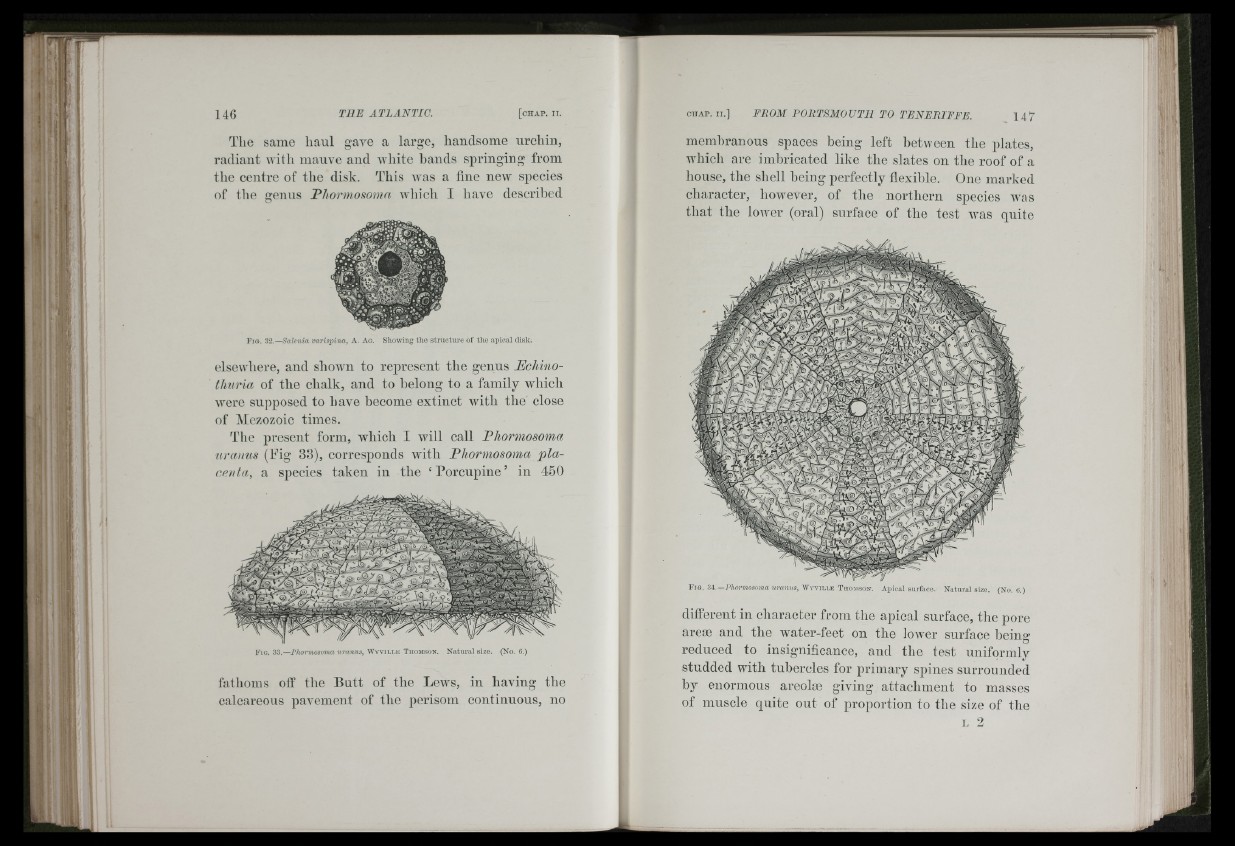
I:
(.]■ H!
The same haul gaA'e a large, handsome urchin,
radiant with mauve and Avhite hands springing from
the centre of the disk. This Avas a fine neAv species
of tlio genus Bhormosoma Avhich I have described
Fig. 32.—S a le n ia v a r isp in a , A. Ac. Showing th e s tru c tu re of the apical disk.
elsewhere, and shoAvn to represent the genus Ecliino-
tlmria of the chalk, and to belong to a family Avhich
Averc su[)posed to have become extinct Avitli the close
of Mezozoic times.
The present form, which I Avill call Bhormosonia
urcoms (Fig 33), corresponds Avitli Bliormosoma p la centa,
a species taken in the ‘ Porcupine’ in 450
Pig. 33.— Phormosoma u ra n u s, W v v i l i . e T h o m s o n . N atural size. (No. 6.)
fathoms off the Butt of the Lews, in having tbe
calcareous pavement of the perisom continuous, no
CIIAP. I I .] F R O M P O R T S M O U T H T O T E N E R I F P E . 147
membranous spaces being left between tbe plates,
AA’hicli are imbricated like the slates on the roof of a
bouse, the shell being perfectly flexible. One marked
character, however, of the northern species Avas
that the loAver (oral) surface of the test Avas quite
F i g . Hi.—Phormosoma u ra n u s , W v v il l e T h o m s o n . Apical surface. Natural size. (No. (i.)
different in character from the apical surface, the pore
arese and the water-feet on the loAver surface heino-
reduced to insignificance, and the test uniformly
studded with tubercles for primary spines surrounded
hy enormous areolae giving attachment to masses
of muscle quite out of proportion to the size of the
L 2
I Ii.
(i!i
ii
f i "
it'
i i '